
Hackaday serves up Fresh Hacks Every Day from around the Internet. Our playful posts are the gold-standard in entertainment for engineers and engineering enthusiasts.
We are taking back the term “Hacking” which has been soured in the public mind. Hacking is an art form that uses something in a way in which it was not originally intended. This highly creative activity can be highly technical, simply clever, or both. Hackers bask in the glory of building it instead of buying it, repairing it rather than trashing it, and raiding their junk bins for new projects every time they can steal a few moments away.
Our front page is a mix of hacks from around the community as well as our own original content. We strive to promote the free and open exchange of ideas and information (editorial policy). We educate those just learning the art of Hack, and provide inspiration for the seasoned veterans. Don’t be shy; if you want to show off your project, or have found something cool of someone else’s that deserves sharing, send us a link!
But don’t just read Hackaday — you should delve deeper into the community. Document your work on our hosting site at Hackaday.io. Tell the world about your interests and show off the stuff you’ve already built. Start a build log for that project you’ve been dreaming of recently. Make some friends and collaborate with them on a project. Get lost digging through mountains of gnarly hacks.
Hackaday Staff
 [Elliot Williams]: Editor in Chief
[Elliot Williams]: Editor in Chief
Let me tell you a little bit about Elliot Williams. He’s the kind of guy who uses a 1990’s 5″ hard drive platter as a scroll wheel. The kind of guy whose oscilloscope cost just a tiny bit less than his last two cars combined. He’s the kind of guy who stays up late debugging home-brew PCBs for random synthesizer modules or figuring out why that interrupt routine isn’t firing. He loves to see projects that are either ultra-minimalist — cleverly squeezing every ounce of performance out of some cheap silicon — or so insanely over the top that they dazzle you with overkill. In short, Elliot’s one of us.
After spending eight great years in Washington DC teaching econometrics and working on inflation by day and running a hackerspace by night, Elliot handed in his badge, moved to Munich and started writing for his favorite blog. His blood runs not #8A0707, but #F3BF10.
- Hackaday Articles
- Editors’ Email
- Hackaday Profile: hexagon5un
- Twitter: @hexagon5un
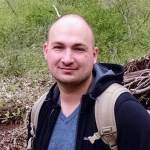 [Tom Nardi]: Managing Editor
[Tom Nardi]: Managing Editor
Tom was weaned on the flickering light of the MS-DOS prompt, but didn’t see the true path until somebody handed him a Slackware install disc in high school. Since then, Tom has been a passionate supporter of open source hardware and software, and believes the free exchange of information is the cornerstone to any successful endeavour. While Tom has contributed to and developed a number of open source projects, a desire for getting his hand’s dirty kept him away from a career in software development. At the crossroads of open source and hardware tinkering Tom found a new obsession in 3D printing, and most of his recent exploits have involved finding ways to capitalize on this exciting new era of home manufacturing.
When he isn’t printing, Tom is usually tinkering with embedded Linux, wireless technology, quadcopters, and anything else sufficiently indistinguishable from magic.
- Hackaday Articles
- Personal Site: DigiFAIL
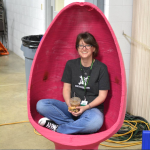 [Kristina Panos]: Assignments Editor
[Kristina Panos]: Assignments Editor
- Hackaday Articles
- Send her an email
- Hackaday Profile: Hacker #17
- http://kristinapanos.com
 [Jenny List]: Contributing Editor and European Correspondent
[Jenny List]: Contributing Editor and European Correspondent
Jenny List trained as an electronic engineer but spent twenty years in the publishing industry working on everything from computer games to
dictionaries before breaking out and returning to her roots.
She grew up around her parents’ small farm and blacksmith business in rural England, so making (and breaking) things is in her blood. Countless projects have crossed her bench over the years, though these days you’ll find her working with electronics and in particular radio, textiles for clothing and costume, decrepit classic cars, and real
cider from first principles.
When she’s not writing for Hackaday she works on language corpus analysis software, designs and sells amateur radio kits, sits on the board of Oxford Hackspace, and is a freelance electronic design engineer and programmer.
- Hackaday Articles
- Hackaday Profile: Jenny List
- Twitter: @Jenny_Alto
- Personal Website: Language Spy
 [Dan Maloney]: Staff Writer and Community Engineer
[Dan Maloney]: Staff Writer and Community Engineer
Dan has been a tinkerer since the days when Radio Shack still issued an annual paper catalog. Scientist by training but developer by necessity, Dan left his Ph.D. program with a Master’s in biology when he realized that automating his experiments and data capture was far more interesting than the ribosomal whooziewhatsis he was supposed to be studying. He spent his career keeping the R&D pipeline filled at a Major Pharmaceutical Company by automating experiments and data capture. What goes around comes around.
Dan recently moved his family to beautiful North Idaho (which is not the part with the potatoes) where he gets to watch the sun rise over the Rockies every day. He has also been known to cosplay with his kids, although he’ll deny it if asked.
- Hackaday Articles
- Hackaday Profile: https://hackaday.io/DPM
 [Joe Kim]: Art Director
[Joe Kim]: Art Director
Joe is an artist/designer from all over California. Since graduating from Art Center College of Design in Pasadena he’s created images for Disney, McDonalds, Sony, and many more. He is now pushing pixels full time for Supplyframe and the Hackaday team.
- Personal site: Transitory Obsession
 [Adam Fabio]: Community Editor
[Adam Fabio]: Community Editor
Adam has a degree in Electrical Engineering from SUNY Stony Brook. While at school, he was a founding member of the Stony Brook robot design team. He helped design David and Rogue, six legged robots that competed in the SAE walking machine decathlon.It’s often said that Adam has been taking things apart since he was old enough to hold a screwdriver. Sometimes he even gets them back together. Adam’s day job is designing embedded software for Radar and Air Traffic Control systems. He also spends time working on the hardware for these systems. It was this merging of hardware and software that lead to his personal site – The Renaissance Engineer. When he’s not at work, Adam can often be found in his basement lab working on anything from 3D printers to quadcopters to pulse oximeters. Some of his current projects have taken him back to his robotic roots, designing robots for students and education.
- Hackaday Articles
- Hackaday Profile: Hacker #13
- Personal site: www.TheRengineer.com
- Twitter: @ajFabio
 [Al Williams]: Staff Writer
[Al Williams]: Staff Writer
Al was in love with computers and ham radio before the Altair 8800 arrived. In the intervening years he’s designed hardware and software systems ranging from tiny embedded sensors to mainframe build systems. He’s been an editor or columnist for several magazines including Dr. Dobb’s Journal and has written numerous books on hardware and software topics. He has a strong passion for digital design, especially implementing CPUs on FPGAs. When he isn’t soldering or programming, you might find Al at a local high school teaching kids about engineering or riding his Can Am Spyder in the sweltering summer heat.
- Hackaday Articles
- Twitter: @awce_com
- Personal Site: AWC Electronics
- YouTube wd5gnr
- GitHub: wd5gnr
 [Lewin Day]: Staff Writer
[Lewin Day]: Staff Writer
Lewin, desires nothing more than the build. Obsessed with cars, everything radio controlled, and will play spies with you if you’ve got a walkie talkie (he’s got six). University educated in Mechanical and Aerospace Engineering because fighter jets sounded like more fun than electronics. After a brief stint in the automotive industry, now employed as a writer & film maker. He lives for good times and wild experiences, generally documenting them in explicit detail on video. They often involve beaches, beer, and music – and a whole lot of smoking power transistors.
Also known as TK. The T stands for T, the K stands for K.
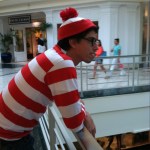 [Bryan Cockfield]: Contributor
[Bryan Cockfield]: Contributor
Bryan is an electrical engineer by trade, working on high voltage systems in the electric power industry. Outside of work, you can find him tinkering with a variety of projects from solar panels to old Volkswagens. You might also see him surfing if you happen to be on a beach in south Florida.
- Hackaday Articles
- Personal Site: Cockfield of Dreams
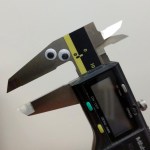 [Sonya Vasquez]: Contributor
[Sonya Vasquez]: Contributor
Sonya picked up her bad posture from countless hours hunched over milling machines and computer screens. The resulting plethora of unfinished mechatronics projects provides her with endless bafflement and occasional whoops for joy. These days she keeps busy maintaining the tool-changing 3D printer project Jubilee while crafting new data acquisition instruments for neuroscientists at the Allen Institute.
- Hackaday Articles
- Hackaday Profile: Hacker #24226
- Personal Site: http://www.doublejumpelectric.com/
- GameCube-Bot
- FabStudio
 [Anool Mahidharia]: Contributor
[Anool Mahidharia]: Contributor
Anool is an Electrical Engineer, working in the field of Test & Measurement at Lumetronics. When not working at his day job, he dabbles in Astronomy, Origami, Photography, Tinkering, Hacking, and Cycling. His choice for the daily commute in Mumbai are his bicycles. He is one of the founders duo of WyoLum Emergents – a global group of Open Hardware enthusiasts. Between all of his hobbies and cycling, he manages to discuss and create original Open Source circuit boards and projects. As a master of digital design, Anool is the driving force behind WyoLum projects. He is also the co-founder of Makers’ Asylum – one of India’s first community driven Maker Spaces. Anool lives in Mumbai with his wife – Samata (who is also an avid Maker) and son – Hearsh.
- Hackaday Articles
- Hackaday Profile: Hacker #953
- Twitter: @anool
 [Bob Baddeley]: Contributor
[Bob Baddeley]: Contributor
Bob is a computer engineer who has been involved in the hardware startup community since 2011. When he’s not building the next greatest IoT products, he’s actively involved in his local hackerspace Sector67 in Madison, WI.
- Hackaday Articles
- Hackaday Profile: Bob Baddeley
- Personal Website: http://bobbaddeley.com
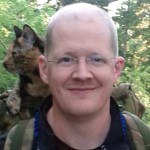 [Donald Papp]: Contributor
[Donald Papp]: Contributor
Donald specializes in electronic design and hardware for startups, entrepreneurs, inventors, and artists through his company AE Innovations. He has always been interested in not only making new things, but also in sharing what he learned. He has a special interest in automation and desktop fabrication, the budding technologies that close the vast gap between making dozens versus thousands of something.
- Hackaday Articles
- Personal Website: It Came From the Workshop
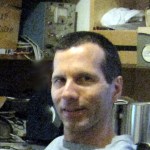 [Steven Dufresne]: Contributor
[Steven Dufresne]: Contributor
Steve is a lifelong maker, amateur scientist and teaching addict, getting his start with his own workbench beside his father’s in the basement making spaceship miniatures and movie props from scratch. Originally a self-taught programmer of BASIC and assembler on a TRS-80, he has a Computer Science degree from the University of Ottawa. Career-wise, in addition to programming, he’s traveled the world teaching engineers how to write applications with QNX, been a solar installer, and now spends much of the time making stuff and publishing it through his RimstarOrg YouTube channel and rimstar.org website.
- Hackaday Articles
- Personal Website: rimstar.org
 [Rich Hawkes]: Contributor
[Rich Hawkes]: Contributor
Rich has been writing software since he got his first computer and decided to make it into a career. He’s now a software developer who works in the video game industry. He got into electronics by building guitar pedals, tweaking and modding them as he went. From there he got into Arduino and microcontrollers. Using these, he learned he could control things with a combination of hardware and software. He’s been very interested in the intersection of DIY electronics, games, and music for years and has several projects on the go. Currently, his dining room table is littered with various development boards, sensors, motors and flashing LEDs, much to the chagrin of those in his house who’d like to have dinner.
 [Brian McEvoy]: Contributor
[Brian McEvoy]: Contributor
Brian McEvoy is an electrical engineer by day and a maker by night. If he’s not engineering he’s probably asleep and he only does that because he’d probably die otherwise.
He prefers hardware to software but enjoys programming despite evidence on his university transcript.
He has been interviewed by newspapers, radio shows, medical professionals, grinders, and even a fashionista (although the fashionista was more of a joke). His favorite color is checkers and he likes food in red packaging.
 [Sven Gregori]: Contributor
[Sven Gregori]: Contributor
Sven is a software mercenary by profession, handling anything from Linux kernel space development on FPGA systems to Android apps. In his free time he prefers to go even lower, spending the nights programming bare metal firmware for microcontrollers and designing PCBs. Originally from a small village in the South of Germany, he decided to move to Northern Finland a few years ago — a great place for LED lighting projects during those dark winter months. Besides programming and electronics, creating music is his next passion, dabbling in song writing and home recording whenever possible.
 [Roger Cheng]: Contributor
[Roger Cheng]: Contributor
Roger is a lifelong tinkerer who enjoys fun software challenges, electronic hardware marvels, and clever mechanical designs. After concluding one career in operating system software, he looked for ways to combine his software experience with his many other interests. The search opened his eyes to advances that have made more things more accessible to hackers than ever before: from 3D printing, to open source software libraries, to the global supply chain available online. And most of all, the rise of information sharing communities like Hackaday. Roger is excited to learn about all the technologies and share cool projects with the world.
- Hackaday Articles
- Hackaday Profile: Roger Random
- Personal Website: New Screwdriver
 [Kerry Scharfglass]: Contributor
[Kerry Scharfglass]: Contributor
Kerry is a firmware engineer with a bent for, well, anything as long as it involves more than a blinking cursor. By day he can be found at a tool-covered bench tracing an errant signal or probing at a misbehaving register. By night he is often found in much the same situation. Learning alone is no fun, and he’s at his happiest when sharing an interesting tidbit or two with someone else, preferably at your local hacker convention. Recently he’s been exploring the boundaries between the hobbyist maker and professional industry of cottage electronics manufacturing.
- Hackaday Articles
- Twitter: @borgel
 [Jonathan Bennett]: Contributor
[Jonathan Bennett]: Contributor
It’s unclear what started Jonathan Bennett down the Open Source/hacker path. He’s old enough to remember the time before common access to the internet, but young enough to have grown up with internet access. Regardless, as a teenager, he installed Fedora Core on his laptop and never looked back.
The years since have made Jonathan into quite the jack-of-all-trades, though he prefers to call himself a Renaissance man. Whether using a compiler, a welder, soldering iron, 3D printer, or table saw, he can convincingly act like he knows what he’s doing.
These days, he runs a small IT business, co-hosts FLOSS Weekly about once a month, and tries to keep up with a weekly security column on Hackaday. Not to mention staying busy with his growing family.
- Hackaday Articles
- Twitter: @jp_bennett
 [Maya Posch]: Contributor
[Maya Posch]: Contributor
Growing up on a farm in the Netherlands, Maya was tragically left to her own devices with lots of space, tools and resources, leading to her early introduction to everything from woodworking and welding to using computers and the internet. Many a device that stopped working was gleefully torn part and occasionally repaired.
Today, Maya is a software developer with a strong focus on embedded and hardware development. She writes books on these and other topics and is rumoured to be now an AI running on a supercomputer in a hidden lair somewhere in this galaxy.
- Hackaday Articles
- Personal Site: mayaposch.com
- Programming & Hardware Blog: mayaposch.wordpress.com
- Twitter: @MayaPosch
 [Drew Littrell]: Contributor
[Drew Littrell]: Contributor
Drew has the same sort of Lego inspired backstory that any other engineer does. Retro and repurposed tech is what he’s all about. On occasion he is known to make project tutorials as well as videos that discuss the finer points of videogames. As a D.I.Y. enthusiast, he genuinely believes that most things would be a little better with some woodgrain.
- Hackaday Articles
- Twitter: @thisoldeconsole
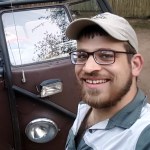 [Danie Conradie]: Contributor
[Danie Conradie]: Contributor
Danie grew up in his father’s garage in South Africa, helping mostly to add project delays and keep tools out of their proper place. As a mechanical engineer he has worked in the composite manufacturing, power generation and defence research and development. Danie taught himself electronics and programming and is passionate about technical problem solving, especially when it involves mechatronics, physical security, agriculture or conservation. He prefers spending time away from “civilisation” and regards Africa as a hacker’s paradise, with its multitude of challenges that required creative solutions.
- Hackaday Articles
- Hackaday Profile: CuriousMongooseLabs
- Instagram: @CuriousMongoose
- Twitter: @MongooseCurious
 [Orlando Hoilett]: Contributor
[Orlando Hoilett]: Contributor
Orlando is a PhD Candidate in Biomedical Engineering at Purdue University. Orlando graduated from Vanderbilt University in 2014 with a Bachelor of Engineering in Biomedical Engineering. His academic interests involve developing wearable sensors for mobile health platforms and developing engaging engineering design activities for undergraduate students. He has several years of experience with analog circuit design and embedded systems. His previous work includes developing an impedance analyzer for a microfluidic blood-brain barrier model. On the education side, he has developed a number of lab activities for first year and junior level Biomedical Engineering students. Aside from his academic pursuits, he is an avid electronics hobbyist and tinkerer. He spends most of his free time developing open source hardware for students, educators, and makers alike.
- Hackaday Articles
- Hackaday Profile: Orlando Hoilett
- Twitter: @oshoilett
- Github: @hoilett
 [Moritz v. Sivers]: Contributor
[Moritz v. Sivers]: Contributor
Moritz earned a PhD in physics and worked in fundamental research before making the tough decision to leave university and get a “real job”.
Looking for a hobby to compensate for his office job he started tinkering with electronics and immediately felt at home in the open hardware community.
He loves everything geeky from retro gaming and 3D printing to collecting physics toys. Apart from that, his passion lies in funky music, capoeira, river-surfing, and skateboarding.
- Hackaday Articles
- Hackaday Profile: Moritz v. Sivers
- Github: @vonsivers
- YouTube: Zaphunk
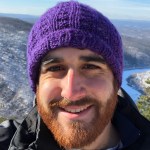 [Adam Zeloof]: Contributor
[Adam Zeloof]: Contributor
Adam loves finding new outlets to satisfy his passion for creating, including glassblowing, ham radio, jewelry smithing, photography, verilog design, baking, writing, podcast producing, and taking on assorted hardware and software projects (which sometimes even work). He earned his bachelor’s degree in mechanical engineering from Carnegie Mellon, then worked at SpaceX for a few months before returning to CMU for his master’s. Now, he’s an engineer at Boston Dynamics. Adam likes cars, dogs, and the color purple. He probably just bought another camera.
- Hackaday Articles
- Twitter: @azzeloof
- Personal Site: adam.zeloof.xyz
- YouTube: azzeloof
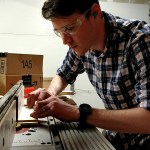 [Matthew Carlson]: Contributor
[Matthew Carlson]: Contributor
Matthew is determined to be as well rounded as possible. His day job is currently as a software engineer working on UEFI. Outside of work he spends his time renovating a home, woodworking, baking, or tackling the muse of the week. His greatest weakness is starting another project before the current one is actually finished.
- Hackaday Articles
- Hackaday Profile: Matthew Carlson
- Github: matthewfcarlson
 [Chris Lott]: Contributor
[Chris Lott]: Contributor
Chris got hooked on electronics and Ham radio as a teenager in the 70s. In high school he played video games on an Atari 2600 console,learned to program BASIC on a TRS-80, and learned RPN on an HP-25 calculator. Then at Ga Tech in the 80s he learned FORTRAN via punched cards, later terminals, and assembly language on micro- and mini-computers. When he wasn’t busy studying or building a satellite tracking station for the Ham radio club, Chris worked as a coop student for the university on a number of projects. He worked on a team doing 3D computer modeling on a VAX, restored a 1947 analog computer for Ga Power, and interfaced an old Data General Nova II to several instrumentation radars. Besides graduating with his degree, the high point of those years was spending a few weeks at the North Pole collecting radar measurements of sea ice.
He moved to Huntsville, AL and worked in the government and aerospace industry, focusing on radar and NASA projects. In the early 2000s Chris got fed up with government red-tape, and refocused his career on industrial and consumer electronics. He eventually relocated to South Korea in 2004, where he started a niche-market electronics manufacturing company and runs an engineering consultancy called The Stumbler. He is interested in everything, but tries to stay focused these days on all things embedded, history of technology, and Ham radio when he has a chance.
- Hackaday Articles
- Hackaday Profile: The Stumbler
- Github: TheStumbler
- Personal Site: thestumbler.io
 [Stephen Ogier]: Contributor
[Stephen Ogier]: Contributor
Stephen got his first taste of hacking in high school when he started modifying electric guitars. He was immediately hooked and wound up doing a PhD in Electrical Engineering, which he spent hacking the hardware of MRI scanners. Raised in Texas, Stephen presently lives in London and, during the day, works as a postdoc on experimental MRI hardware. His present interests include embedded system development, audio electronics, and unconventional computer architectures.
- Hackaday Articles
- Twitter: @s_e_ogier
- Personal Site: seogier.github.io
 [Ryan Flowers]: Contributor
[Ryan Flowers]: Contributor
Ryan Flowers writes for Hackaday from a little rural town in the Pacific Northwe(s)t of the US. A web hosting professional of more than 20 years, he currently does his best to teach others how to provide amazing technical support. Ryan’s been obsessed with radio, electronics, and computers from a young age and at one point when asked what he wanted to be when he grew up, his answer was “Radio Shack”.
In the summer he enjoys the beauty of nature, whether it’s photographing landscapes, riding his home built recumbent trike, camping, or bombing down old logging roads in his decades old Suburban.
During the Endless Winter his electronics workstation provides shelter from the rain where melting solder supplies warmth and comfort. He dabbles or has dabbled in things like Amateur Radio (which in itself focuses on homebrew QRP), metal working, building recumbent things, fiddling with guitar, writing technical articles, geocaching, photography, hobby drones, rc gliders, and [TRUNCATED FOR LENGTH]. And above all else, he loves a good hack! And coffee. Lots and lots of coffee.
- Hackaday Articles
- Personal Site: MiscDotGeek.com
- YouTube: MiscDotGeek
 [Chris Wilkinson]: Contributor
[Chris Wilkinson]: Contributor
Chris became a retrocomputing hobbyist after nearly tripping over a discarded Apple IIe on his way to work one day. What started off as a single restoration has evolved over the years into an all-consuming pastime, and a garage littered with the carcasses of unfinished projects. When not tinkering away with old electronics, Chris dabbles in software-defined radio and writing fiction.
 [Dave Rowntree]: Contributor
[Dave Rowntree]: Contributor
Dave is a full-time foster carer who somehow manages to find time to run a one-man electronics prototyping business from his shed. During the day he can be found slaving over LTSpice or hacking together electronics equipment in as frugal a manner as possible, with varying degrees of success. He has worked for semiconductor companies for many years, in a variety of roles from embedded software, to IC test, and even a stint in ASIC design, but nowadays is more likely to be involved in product innovation.
When not being nerdy he can be found attempting to extricate himself from underneath a wriggling mass of children and dogs.
- Hackaday Articles
- Personal Site: David Rowntree
- Twitter: @sobuildit
 [Robin Kearey]: Contributor
[Robin Kearey]: Contributor
Robin is an electronic engineer based in the Netherlands. He started his career at an early age by taking apart radios, programming in BASIC, collecting all kinds of computing machinery, and dissecting integrated circuits under a microscope. At university he discovered the exciting world of integrated circuit design, and he has been working in the semiconductor industry ever since. In his spare time he enjoys running classic computer games on their original hardware, as well as fixing old computers and electronic equipment that he might never actually use.
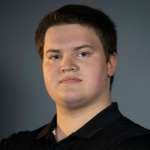 [Jim Heaney]: Contributor
[Jim Heaney]: Contributor
Jim is a student of Industrial Engineering at the Rochester Insitute of Technology. At RIT, he worked as a lab manager for the university’s makerspace, as well as the Director of Operations of the RIT Launch Initiative, the rocketry and propulsion development group on campus. In addition to being an RIT student, Jim works at the Norwalk Havoc Robot League, assisting in a wide variety of production and engineering-related tasks for the event. In his free time, Jim likes to tinker with electronics and has developed and open-sourced a few soldering kits he designed to assist fellow students at his makerspace.
- Hackaday Articles
- GitHub: @JimHeaney
- Personal Site: JimHeaney.com
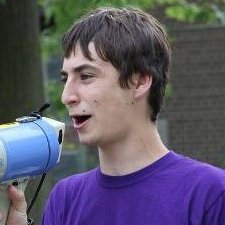 [Eric Evenchick]: Contributor
[Eric Evenchick]: Contributor
Eric is finishing up a degree in Electrical Engineering at the University of Waterloo, in Waterloo, Ontario, Canada. During his time at Waterloo, he’s been involved with the University of Waterloo Alternative Fuels Team (www.uwaft.com), developing electronics and controls systems for hybrid vehicle powertrains. He has also had some fun making things go boom, and occasionally upwards, with the Waterloo Rocketry Team (uwrocketry.blogspot.ca).His co-op placements have given him the chance to develop production hardware and firmware. He designed a vehicle data logger while at CrossChasm Technologies, and worked on the first ever over-the-air firmware upgrade for a car at Tesla Motors.
- Hackaday Articles
- Hackaday Profile: Hacker #149
- Personal site: www.evenchick.com
- Twitter: @ericevenchick
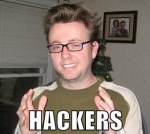 [Will Sweatman]: Contributor
[Will Sweatman]: Contributor
Will is very lucky to have a day job that fits into his hobby of hacking. He travels all over the country to some of the most prestigious universities and largest corporations to repair scientific instruments. He brings back faulty parts and uses them in all kinds of neat projects. Will has been hacking since 2008, and mostly enjoys reverse engineering hardware and firmware. One of his favorite hacks is to take animatronic toys and make them say things they were never supposed to. He has done two high altitude balloon projects, and he really wants to push this area further. You can do some cool stuff up there.
- Hackaday Articles
- Hackaday Profile: Hacker #7422
- Personal site: Sweatman Scientific
 [Michael Shaub]: Contributor
[Michael Shaub]: Contributor
Michael Shaub is a designer and maker living in Chicago, IL, who calls LA a 2nd home. Since childhood, Michael has been a maker, learning woodworking from his father, who refinished furniture in their basement workshop. A fascination with electronics and audio equipment merged with high-school rock bands and flourished at Art Center College of Design, where he learned Max/MSP, OOPic programming, 3D Printing, and CNC fabrication.
As a Digital Experience Designer, Michael gets to play in this realm at large scales and with big budgets, but his passion remains in his own basement workshop with woodworking, jewelry fabrication, electronics, home automation, projection mapping, and his apprentice art-making robots.
- Hackaday Articles
- Hackaday.io Profile: @Michael Shaub
- Personal Site: michaelshaub.com
 [Ben James]: Contributor
[Ben James]: Contributor
Ben is an electronic product design engineer with a passion for software who lives in the UK. He loves building and flying drones, DIY audio shenanigans, mechanical keyboards, and DevOps.
When he’s not reverse engineering random bits of kit, Ben plays jazz piano and classical church organ.
- Hackaday Articles
- Personal Site: benjames.io/
 [Quinn Dunki]: Contributor-at-Large
[Quinn Dunki]: Contributor-at-Large
Quinn has been making games for 36 years, on platforms ranging from the Apple II to all manner of newfangled things. She currently manages engineering for mobile games at Scopely. She also pursues consulting, independent development, mixed-media engineering projects, and writing. In her spare time she welds things, races cars, hacks electronics, and berates her friends with sarcasm.
- Hackaday Articles
- One Girl, One Laptop Productions
- Personal Site: Blondihacks
- YouTube Channel: Blongihacks
 [Pedro Umbelino]: Contributor
[Pedro Umbelino]: Contributor
Pedro is a security researcher by day and Hackaday contributor by night. He started messing around with computers on a Spectrum, watched the bulletin board systems being dropped for the Internet, but still roams around in IRC. Known by the handle [kripthor], he likes all kind of hacks, hardware and software. If it’s security related even better.
- Hackaday Articles
- Personal Blog: Rural Hacker
- Public Key
 [Inderpreet Singh]: Contributor-at-Large
[Inderpreet Singh]: Contributor-at-Large
A MacGyver fan as a child, IP started with electronics at the age of 10 as a self taught tinkerer in the age of dialup modems and tone hacks. It all started with Scripts, C, 555s and IR remote hacks.
After working in the toll automation industry as both designer and manager, he currently enjoys teaching engineering fundamentals part-time while he works on his PhD and other fun and paid projects. He works on everything from microcontrollers to FPGAs and from C to CSS.
His better half is a software engineer and they have a son named Anhad Makhni who has all the tell-tale signs of a becoming a maker/hacker.
PhD or not, he is…
“Just one lab accident away from becoming a supervillain”.
- Hackaday Articles
- Hackaday.io Profile: IPv1
- Personal Website: https://Inderpreet.github.io
- Twitter: @ip_v1
- YouTube Channel: InderpreetSingh
 [Aleksandar Bradic]: Contributor-at-Large
[Aleksandar Bradic]: Contributor-at-Large
Alek is still figuring it all out, but has been around for a while. Started out as Linux systems/embedded engineer, he spent most of his career so far playing with challenges at the intersection of infrastructure (large-scale/high-performance stuff), algorithms (search, crypto) and data (signal processing, machine learning). He holds Bachelor’s Degree in Electrical Engineering, MSc in Computer Science and MSc in Statistics. He’s obsessed with computation, art and building unnecessary complex things. Also noise. In his real life, he’s the CTO and overlord-in-residence at Supplyframe.
- Hackaday Articles
- Hackaday Profile: Hacker #1
- Twitter: @randomwalks
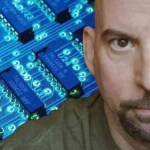 [Bil Herd]: Video Producer
[Bil Herd]: Video Producer
Bil Herd is a self-taught engineer who started as a licensed TV/CB Repairman in his teens. By the age of 24 he was working as a senior design engineer for Commodore Business Machines in the mid 1980’s where he is best known for home computers including the Commodore C128 and Plus4/264 series of home computers. Bil continued to design hardware until the mid-1990’s having co-authored a high speed/machine vision patent, when he was bitten by the entrepreneurial bug and has since founded several networking and software design companies.
Bil attributes his design style and his intuitive understanding of electronics to having come up through the ranks of troubleshooting. He loves the part of engineering that can be scary: analog circuits, ground loops, RFI/EMI, RF and high speed digital/FPGA. Having designed complex products that had production runs in the millions Bil tends to see a design as a living ecosystem and believes that a good designer needs to be both meticulous and artistic.
Bils’s upcoming website is Herdware.com (referring to an Easter Egg embedded in the C128), where he hopes to figure out and join the Open Source Hardware community as an active member.
 [Jordon Clark]: Digital Producer
[Jordon Clark]: Digital Producer
Jordon Clark is a Digital Producer with over 6 years experience creating and publishing content for major media outlets including… Hackaday, iHeartRadio, Complex Media, Ebony Magazine, Sony Music and more.
 [Majenta Strongheart]: Digital Content Host
[Majenta Strongheart]: Digital Content Host
Majenta Strongheart is an emerging designer from San Francisco, California, working at the intersection of design, social innovation, science, and fine arts. She is interested in socially positive design and collaboration; focusing on the ways design thinking and problem solving can contribute to a diverse range of conversations. Through her work Majenta aims to spark curiosity, provide access to new topics, and encourage interaction.
- Hackaday Profile: Stronghe.art
- Twitter: @majentastrong
 [Voja Antonic]: Contributor-at-Large
[Voja Antonic]: Contributor-at-Large
Voja Antonic spent decades working as a freelance microcontroller engineer in Belgrade, but since 2017 he has lived and worked as a hardware engineer in Pasadena, California. His first Z80-based microprocessor projects date back to 1977, just a few years after the release of Intel’s 4004. At the time, he was assembling the firmware manually, using pen and paper. In 1983, he published his original DIY microcomputer project called Galaksija (Galaxy), which was built by more than 8,000 enthusiasts in the former Yugoslavia, and which is a part of an exhibition in the Computer History Museum in Silicon Valley today. To date, he has published about 100 projects, primarily based on microcontrollers, and has released most of them to the public domain.
- Hackaday Articles
- Hackaday Profile: Voja Antonic
- Personal Website: Voja.rs
 Where’s everyone else?
Where’s everyone else?
There has been a long list of great Editors and Contributors to Hackaday. Some people wrote prolifically, some only wrote about a couple of hacks, but everyone made an impact. Only our current staff is listed above, and to all who came before us, thank you for making Hackaday a daily visit for so many people!
[blog_subscription_form]
Advertise on Hackaday
Interested in advertising on Hackaday? We do not accept paid content (articles, videos, etc.) but we do offer banner advertising and have other creative options which are palatable to both reader and advertiser. Please direct all advertising enquires to SupplyFrame, Inc.











